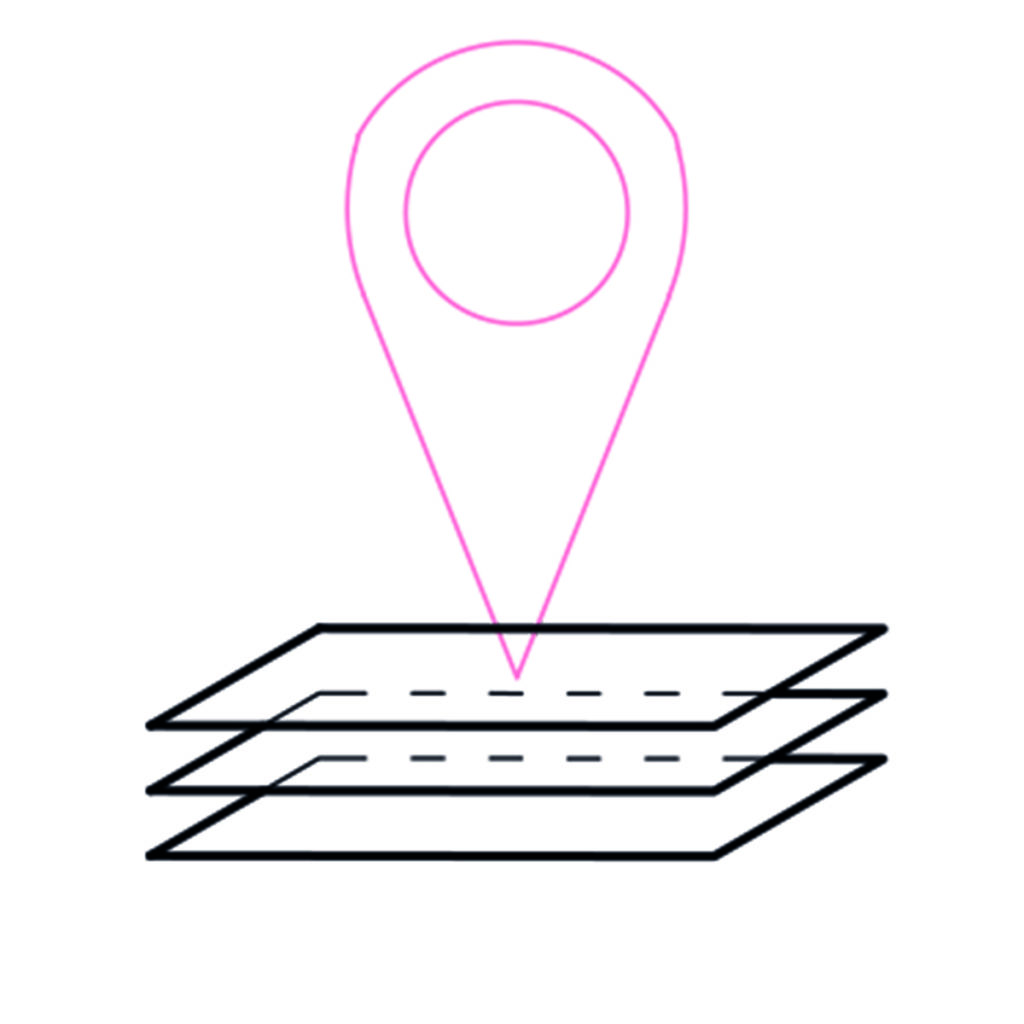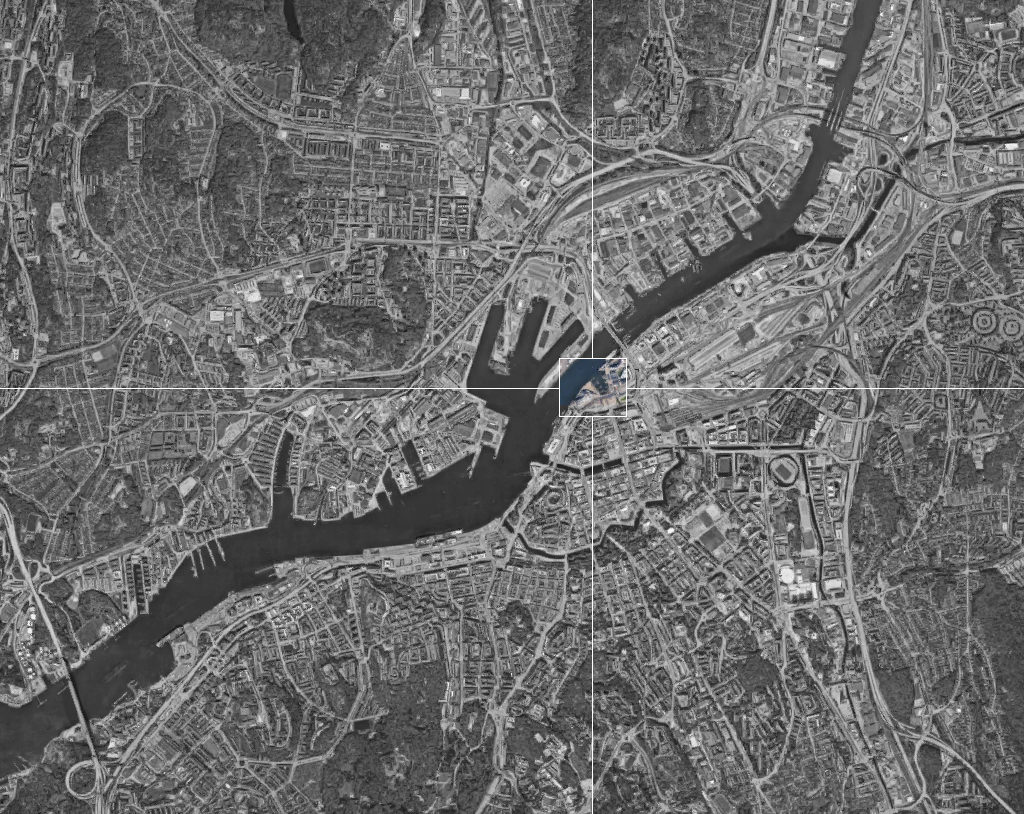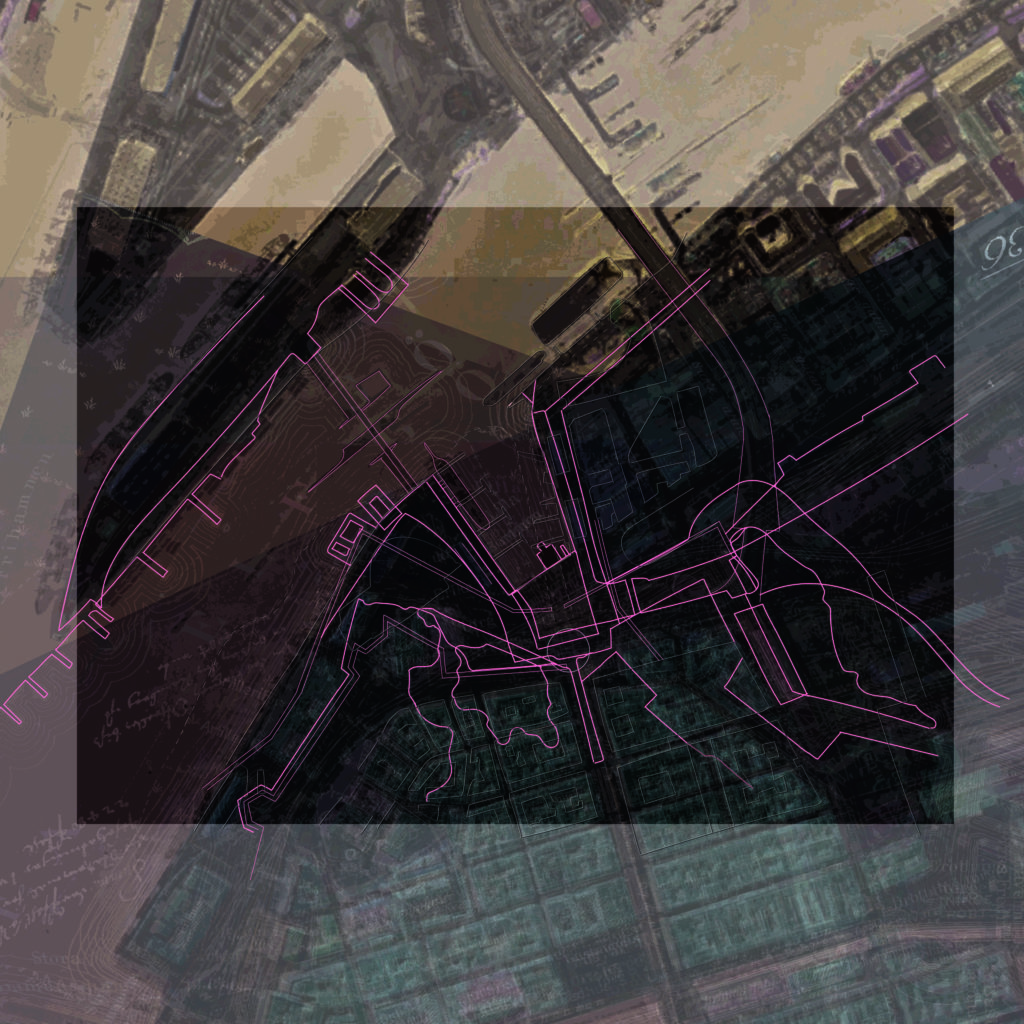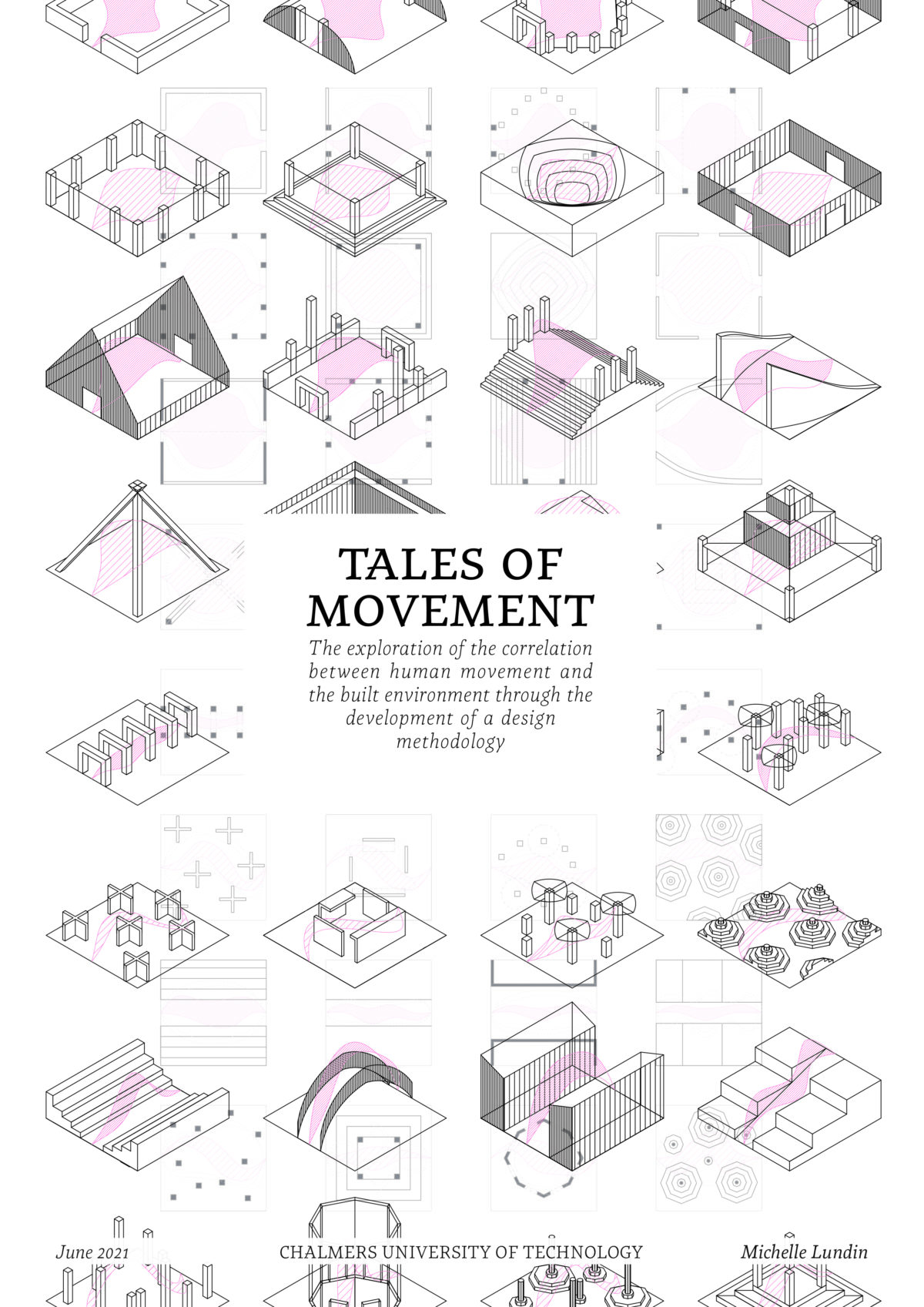
Overlay mapping
In the design studies movement was explored as an aspect of time over space: how can you move in a space, unrelated to a definite time, and how does the space change the perception of time for the visitor? This chapter continues the discussion of the design studies, but focuses on movement as an aspect of space over time, meaning how does the movement change a space through time?
I have chosen to centre my project on Kanaltorget which is located in the area north of Nordstan and south of Operan and the river. Kanaltorget has been an actual square, but has also served as a street for connecting a footbridge over the river,a prison, a route for car traffic, a place for Göteborgshjulet to today be a construction site for Västlänken. One could say it is a place in constant motion, albeit slow motion, characterised by uncoordinated design interventions.

Maps from 1636, 1790, 1820, 1921, 1923, 1960 and 2020 are layered on top of each other to extract historic objects and fields (retrieved from Göteborgs Stad). In accordance with Travelling threads, the physical forms which are now since long gone, are handled simply as extrusions, indentations or clearings.

